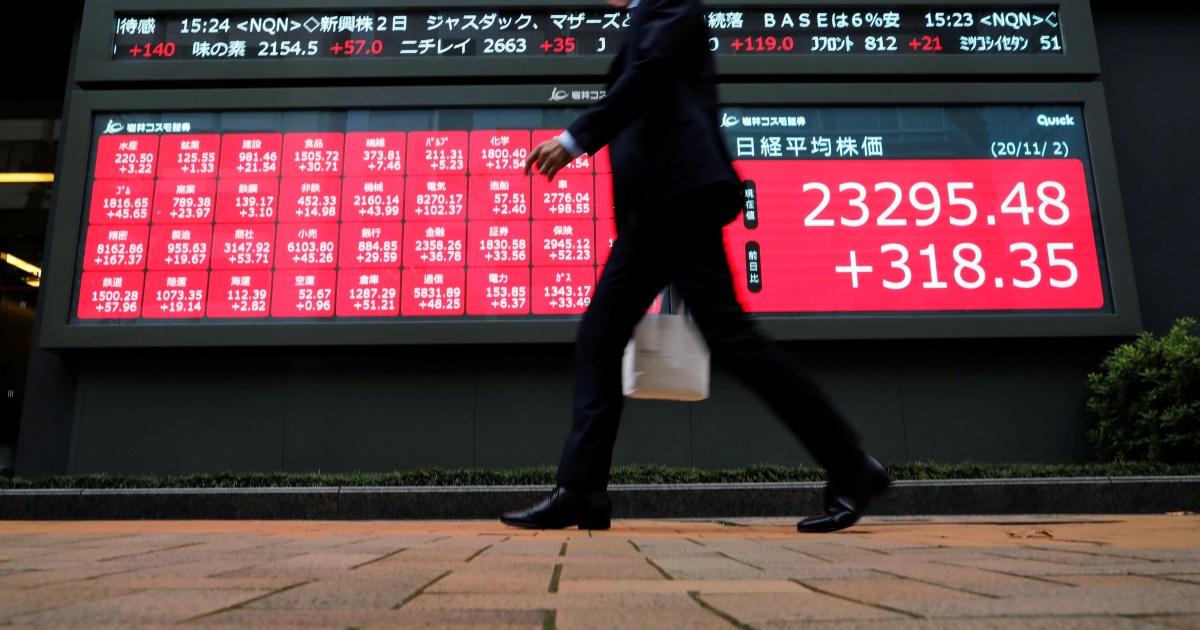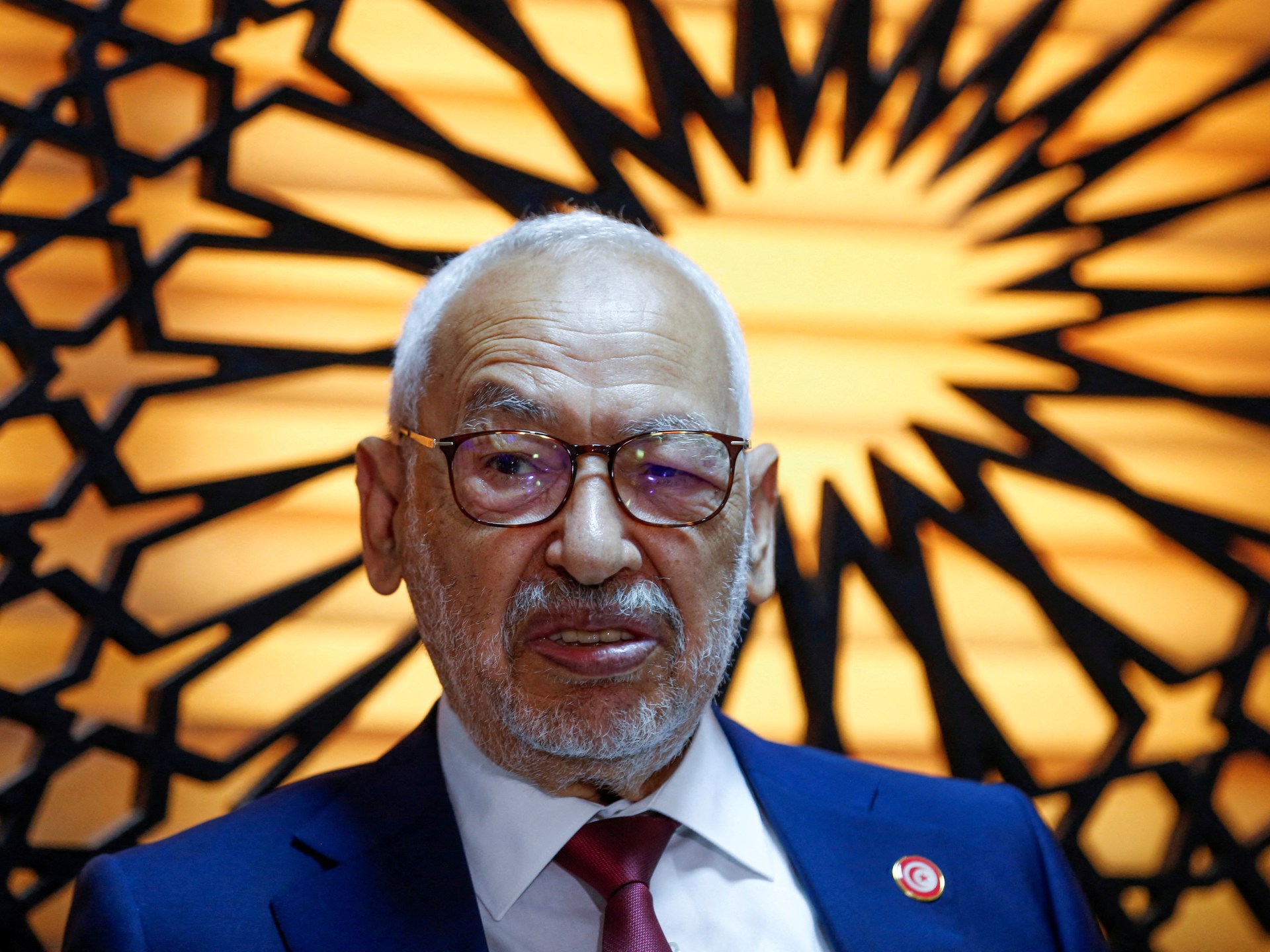Asian markets regain ground as investors hold breath on Ukraine
Asian stocks steadied on Wednesday and demand for safe havens waned a little as investors saw Russian troop movements near Ukraine and initial Western sanctions as leaving room to avoid war.
Commodity prices remain elevated, however, with traders still nervous over the situation on Europe’s eastern edge.
Overnight, oil struck a seven-year high while the S&P 500 index fell into correction territory, having dropped more than 10 percent from January’s record peak.
S&P 500 futures were up 0.4 percent in early Asia trade, after United States President Joe Biden left the door open to diplomacy as he announced sanctions on two Russian banks and some elites close to President Vladimir Putin. The European Union and the United Kingdom also announced plans to target banks and Russian elites while Germany halted Russia’s Nord Stream 2 gas pipeline, leading to a nearly 11 percent leap in Europe’s benchmark gas price.
MSCI’s broadest index of Asia-Pacific shares outside Japan eased 0.1 percent. Japan’s Nikkei 225 was closed for the Emperor’s birthday holiday.
“The market sees the various sanctions … as modest and perhaps not as aggressive as feared,” said Chris Weston, head of research at brokerage Pepperstone.
“For now, one could assess there is a vibe across markets that Russian troops will hold Donbas, but push no further,” he added, referring to the parts of eastern Ukraine that Russia has recognised as independent and has sent troops to reinforce.
Alex Holmes, an emerging markets economist at Capital Economics in Singapore, said that most Asian economies had relatively limited trade and financial ties with Russia or Ukraine.
“While it’s possible that domestic business and consumer confidence could take a hit, the crisis would need to escalate significantly for this to move the needle at a macro level,” Holmes told Al Jazeera.
“The biggest impacts are likely to come through commodity prices – in the worst case scenario we estimate the oil price could rise to $120-$140 per barrel.”
Holmes said, however, that rising energy prices would weaken people’s purchasing power, hitting a “weak spot for many economic recoveries in Asia – unlike in the US, private consumption is still below pre-pandemic levels in most cases.”
“The need to control inflation could also lead to tighter policy than otherwise,” he said.
Marcel Thieliant, head of Australia, New Zealand and Japan services at Capital Economics, said a “plausible worst-case scenario” is that crude oil prices hit $120 per barrel over the coming weeks.
“In that scenario, we estimate that inflation in Japan would reach 2 percent by Q2 instead of our existing forecast of 1.4 percent and it would stay there until year-end,” Thieliant told Al Jazeera. “The BoJ would look through this though and won’t tighten policy in response as it’s unlikely to influence wage growth. Instead, it will be a drag on households’ purchasing power and could slow the economic recovery.”
‘Stagflationary shock’
Wheat futures had also leapt on Tuesday, posting the sharpest jump in three-and-a-half years, and corn futures hit an eight-month high on concern that conflict could disrupt grain supply from the Black Sea export region.
Brent crude futures were last steady at $96.74 a barrel, having eased off Tuesday’s top of $99.50. US crude futures sat at $91.92 a barrel.
“In short, investors are worried about a stagflationary shock to Europe and, to a lesser degree, the global economy generally,” said Shane Oliver, chief economist at AMP Capital in Sydney.
Jitters around Ukraine have hit investors in tandem with rising interest rates as central banks around the world start moving to head off inflation.
The Reserve Bank of New Zealand announced its third consecutive rate increase on Wednesday, lifting its benchmark cash rate by 25 basis points to 1 percent, as expected, but surprised investors with a hawkish tone.
The New Zealand dollar rose 0.6 percent on the news and is on its longest streak of daily gains in almost two years. Bonds in New Zealand and Australia came under pressure.
China is a notable outlier with rates falling and, according to a private research group, banks in nearly 90 cities have cut mortgage rates this month.
Elsewhere in currency trade, moves were fairly muted, though hope that war in Ukraine can be avoided have taken some of the bid from safe havens.
The yen was last steady at 115.00 per dollar, having hit 114.50 a day ago. The euro hovered around its 50-day moving average at $1.1331.
The Australian dollar, which has been supported by surging commodity prices, touched a two-week high of $0.7235.
Cash Treasuries were closed in Asia due to the holiday in Tokyo, but benchmark 10-year futures were steady and showed an implied yield of 1.96 percent.
Precious metals eased from overnight highs. Gold was steady at $1,898 an ounce (450 grammes) and is up more than 8 percent from December lows, while platinum and palladium have surged on fears about supply disruption.
Platinum is up more than 20 percent since December and palladium has gained more than 50 percent.
“That’s even more impressive when seen against a backdrop of rising rates,” said Shafali Sachdev, head of foreign exchange in Asia at BNP Paribas Wealth Management.




